Occasional Ramsgate Writings Donald G Long | Click here to buy the book or veiw our other local books When I produced this book it occurred to me that the decedents of the people named in it might want a means of communicating with each other, if you click here you can leave comments for others to see, you don't have to join anything or fill in any forms, you can even comment anonymously should you wish to.
Occasional Ramsgate Writings Donald G Long | MOUNT ALBION HOUSE, RAMSGATE | ST PAUL'S CHURCH KING STREET, RAMSGATE | HERESON SCHOOL, RAMSGATE | HERESON AND HOLLICONDANE | CHATHAM HOUSE COLLEGE 1797-1917
MOUNT ALBION HOUSE, RAMSGATE
Though not a building of great architectural merit. Mount Albion House has a history of considerable interest spanning almost two hundred years.
It was built in 1798 by a local miller, John Marshall, whose mill stood a little way from the house, at what is now the top of Albion Road. For the first load of wheat purchased from a Mr Blackburn of St Peter's, the owners paid nearly 120 guineas (£126). But the price left so little profit margin after its manufacture into flour that they decided to pull the mill down in 1810. It was re-erected on the West Cliff and it is very likely that the mill which stood in Grange Road until 1930 was the one removed. The site is now called Windmill Parade.
For a short period the house was leased by the son of the Duke of Hamilton and Brandon, and known as the Mount Albion Estate. However, in 1817 the house and surrounding estate came into the possession of Lady D'Ameland and the association with her family was to last some fifty years. She was the Lady Augusta Murray, daughter of the second Earl of Dunmore. In 1792 when in Rome, she met, and a year later married, Frederick Augustus, the sixth son of George III, this ceremony being performed by the Rev. Mr Gunn. A second marriage ceremony took place in December 1793, at St George's, Hanover Square. They had two children; a son, Frederick Augustus, born 1794, and a daughter, Ellen Augusta Emma, born on 11th August 1801. Later that year Lady Augusta's husband left her, so as to be granted his dukedom of Sussex and a higher parliamentary allowance.* She has the distinction of being the only lady whose marriage was actually annulled by the Royal Marriages Act of 1772, passed at the instigation of George III to stop his sons from contracting unsuitable alliances.
Note. According to Roger Fulford's 'Royal Dukes', re-printed by Duckworth in 1949, he allowed her £4,000 a year and the custody of the children. In 1806 he brought an action to stop her using the Royal Arms and in 1809 a further action to take the children away as he understood that she was bringing them up to believe that they were a Prince and Princess.
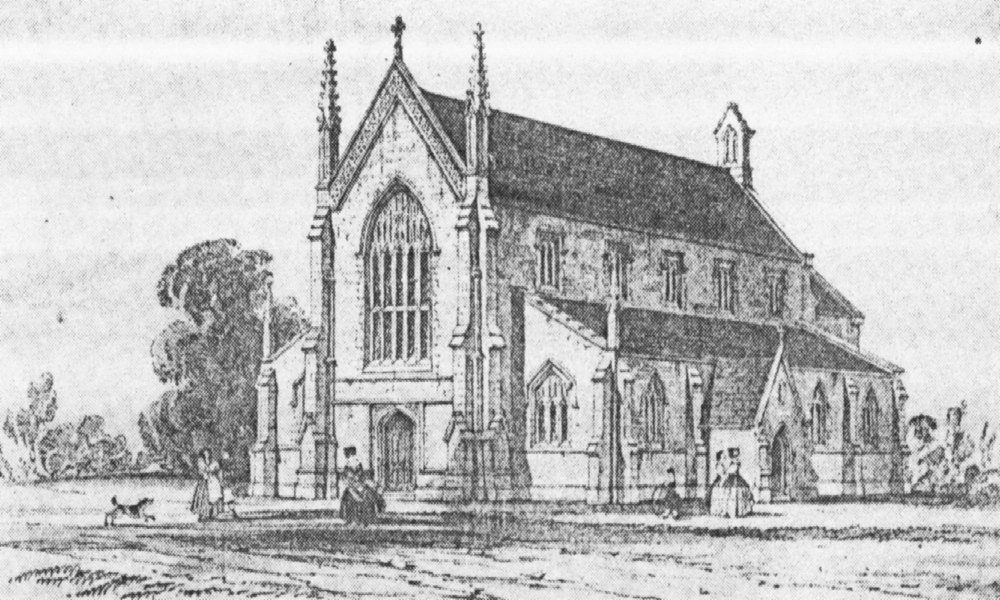
Trinity Church Ramsgate
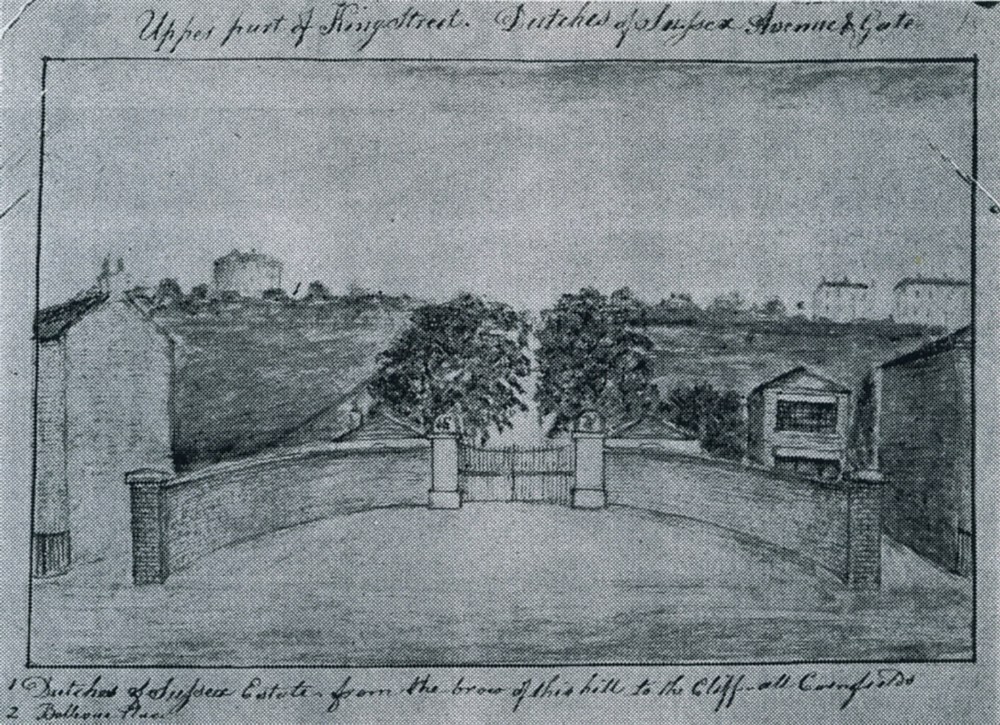
The Lodge and Gates
Meanwhile, Lady Augusta called herself 'Duchess' (note the print of the double lodge and gates, showing the entrance to the estate of the Duchess of Sussex). However, as she had reasonably to have some married name, she had conferred upon her the title of Lady D'Ameland in 1806 by a Royal licence, referring to her family connection with the House of Orange. In 1809 the children were given the name of `D'Este', which related to an Italian noble strain in their parents' joint ancestry. By 1817 the son had embarked on a military career in the 9th Lancers - and here we leave him for he does not feature in the history of the house.
The daughter, known by her last Christian name, Emma, now aged sixteen, appears to have been unaffected by these family tribulations, and it was said that her 'bouncing English looks' belied her Italianate name.
Lady D'Ameland died in 1830 at about seventy years of age, and the estate appears to have passed to Emma alone and not her brother. Her mother, however, is remembered in the naming of Sussex Street - the local population maintaining that she was indeed the Duchess of Sussex. With control of the estate, and a limited income. Mile. D'Este, in 1838, attempted to sell the estate as a whole, but when this failed parts of it were laid out in building plots, many of which were sold.
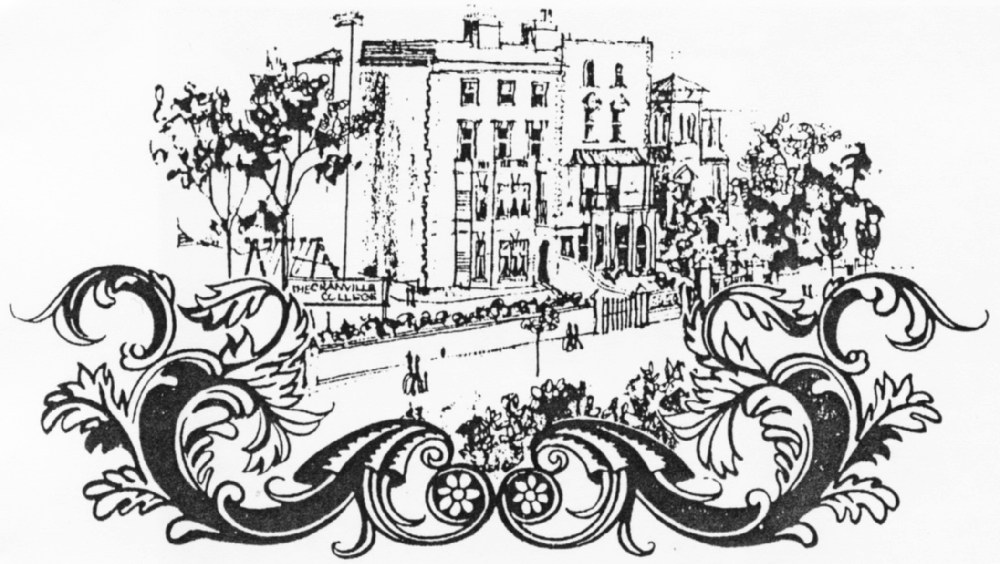
Mount Albion House in the late nineteenth century
Emma - Mile. D'Este - appears to have lived on happily at Mount Albion House and in 1844 she presented a plot of ground for the Church of Holy Trinity, Mount Albion, St Lawrence, Thanet, which itself has a most interesting history. It was consecrated the following year, 1845, and that same year she married her brother's former attorney, Sir Thomas Wilde. Sir Thomas was a widower, and in 1850 he became Lord Chancellor and Baron Truro, for which reason the remainder of the estate was referred to as the Truro Estate. During this period a case was fought by the then Sir Thomas and his wife, on appeal from the High Court of Chancery, the respondent being one Magnus Gibson, who had purchased one of the lots mentioned above. It was lengthy and involved, but appears to have concerned partly a right of way. The Liberty Way'/ which was possibly along the old boundary between St Lawrence and Ramsgate, and indeed the letters 'St.L-R' (see photograph) were still to be seen until a few years ago on the corners of Bellevue and Truro Roads.
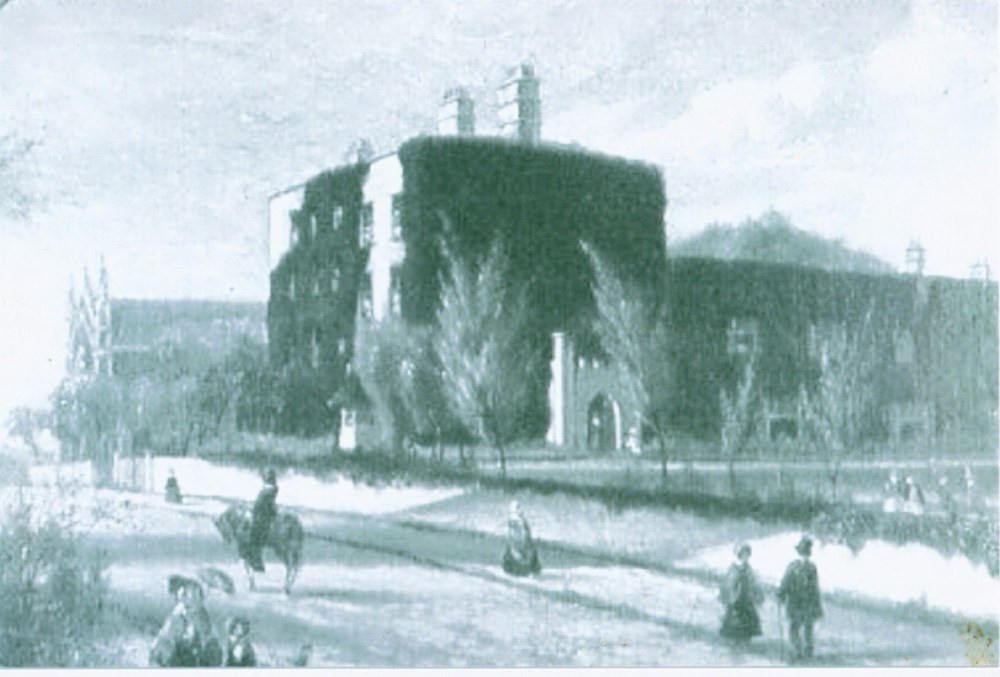
Mount Albion House in about 1850
Lord Truro died in 1855 and Emma herself in 1866, and they were buried at St Lawrence. The names of the roads D'Este, Augusta and Truro recall the family.
Since 1866 the history of Mount Albion House has not been fully traced - but in 1882 the owner is shown as the Executor of J. Robertson, and around this time it came into the possession of Mr Synett, a local mayor, though not of Ramsgate (Ramsgate was not incorporated until 1884).
However, it is clear that Dr John Collis Browne was living there at the time of his death in August 1884. Research in 1972 found that he died at Mount Albion House on 30th August 1884 and his grave was discovered in an overgrown part of St Lawrence churchyard. Dr Collis Browne was the originator of the medicine Chlorodyne, which in 1848 he used in India when there was a desperate visitation of cholera, whilst he was serving with the 98th Regiment of Foot as their surgeon. In 1856 he left the army and went into partnership with John Thistle-wood Davenport, Chemist, then at 33 Great Russell Street, to whom he assigned the sole right to manufacture and market his Chlorodyne which since the Medicines Act of 1968 has been known as 'J. Collis Browne's Compound'. It is still marketed by J.T. Davenport of Southwark - the same family.
Once the facts of Dr Collis Browne's residence at the house had been verified, plans were made by Messrs Davenport to erect a plaque on the house in his memory. The plaque was designed by Mr William Sharpington, the distinguished lettering craftsman, and unveiled by the Mayor of Ramsgate on 8th May 1973. Dr N.M. Goodman recorded the event in The Lancet' published under the heading 'IN ENGLAND NOW - a Running Commentary by Peripatetic Correspondents'. It went as follows:
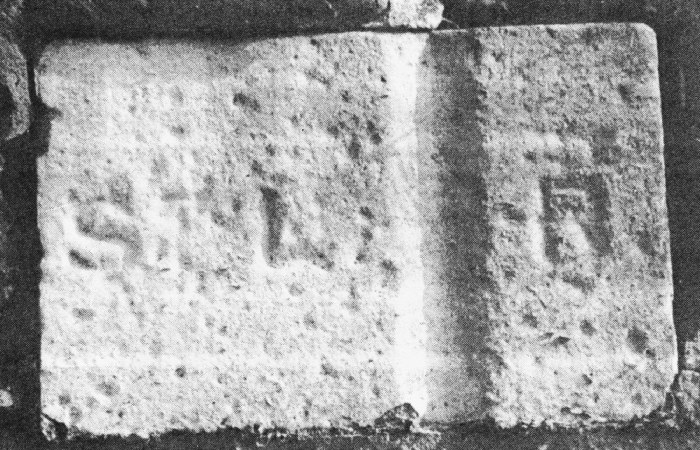
St L-R at one time on the corners of Bellevue and Truro Roads
'A crowd there was in Ramsgate Town
To honour Dr Collis Browne,
Whose Chlorodyne's saved countless chaps
From having Untoward Mishaps,
And many another skilled invention
He made, too numerous to mention.
So Collis Browne deserves his plaque
Which Mayor, Mayoress, and Town Clerk
With friends and kinsmen by the score
(Although he died in 'eighty four)
Unveiled, and thus gave him his meed
Which he (or she) who runs may read.'
The doctor was also the inventor of various items for yachts, for it was his yacht which first brought him to Ramsgate in 1873, when he lived at 15 Nelson Crescent.
So with the passing of Dr Collis Browne there was another gap, until some time later the house was known as the Granville College, St Lawrence-on-Sea (Charles James Scott, MA Cantab., Principal). This College, like the nearby Granville Hotel, was named after the popular Lord Warden of the Cinque Ports. At the end of World War I it became known as St Hilda's, a preparatory school run by the Misses Guthrie and Dowick.
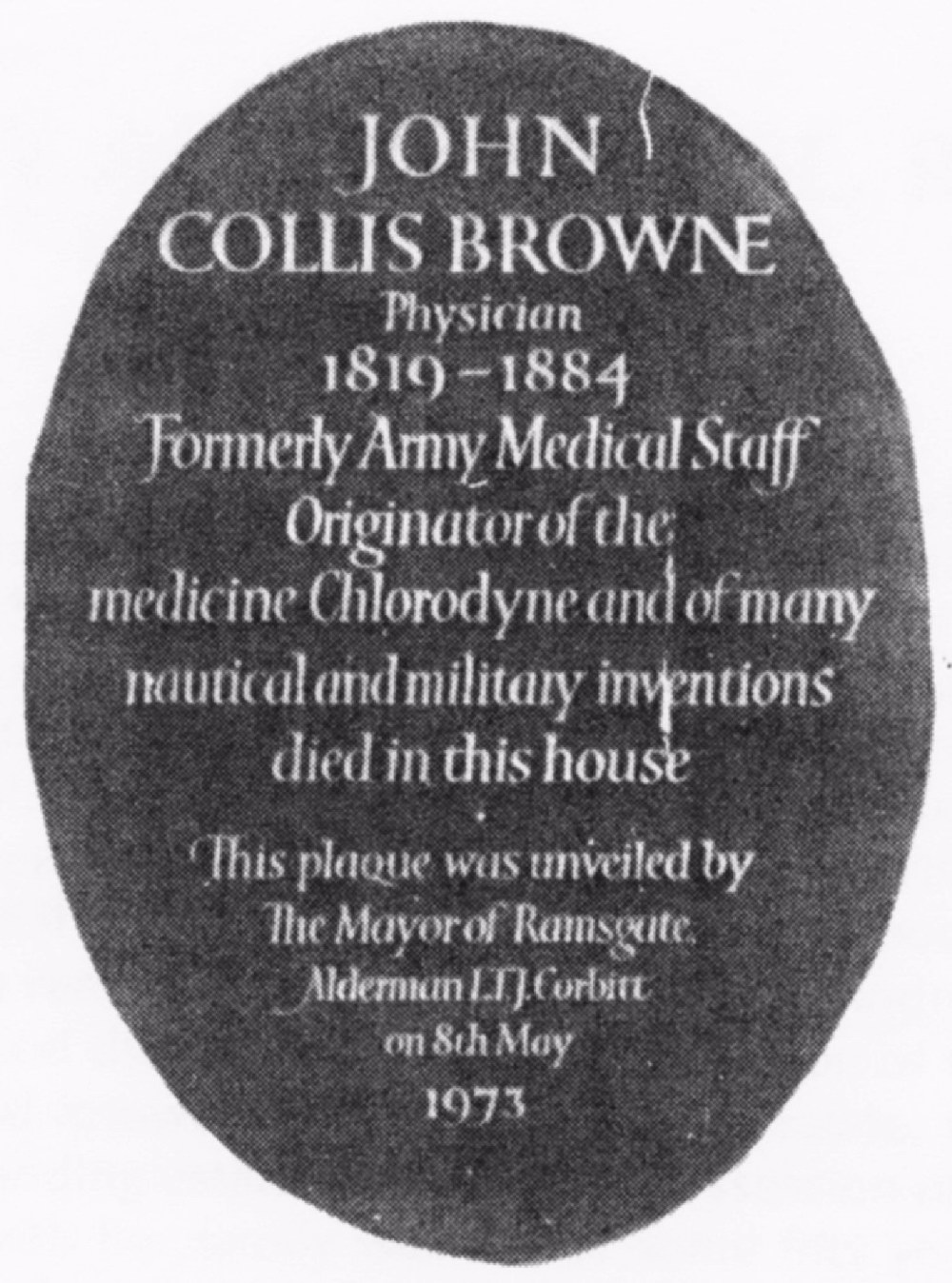
Plaque to Dr J. Collis Browne
After the Second World War the house became a hotel and by 1964 it had changed its name to the Hotel Maria - the official address being 22 Victoria Road, East Cliff, Ramsgate. In 1972 it was purchased by a property company and converted into flats and the place where the name of the house had been carved into the stone over the doorway was filled in.
How happy it would be if the property were to be re-named Mount Albion House - or at any rate known by that name.